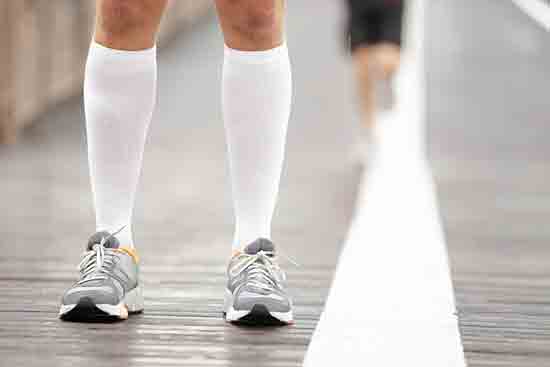You have probably seen people walking around with compression socks, but what are they? They are worn for health reasons, but also because they help to reduce muscle soreness after workouts. When the muscle is not sore, it can recover faster and become stronger.
You can find compression socks in various forms on the market today. Some have reflective strips that give visibility at night, some have better airflow to combat sweaty feet during summertime. The wide varieties of compression socks come in a variety of colors and styles too that makes them easy to match with your outfit or go-to style.
Different Types of Compression Socks and How They Fit

Compression socks are designed to help people with diabetes maintain their blood sugar levels. They stop blood from pooling in the feet, legs, or abdomen and prevent swelling.
Compression socks come in different types depending on the type of compression needed. The most common types are graduated compression, which is good for mild to moderate edema; low-profile compression, which is good for lower extremity swelling; and high-profile compression which is good for severe edema.
How to Choose the Right Size of Your Compression Socks?
Compression socks are used by athletes and accident victims to keep their legs warm during cold weather. The running compression socks are made of particular materials that help in the blood circulation and the warming effect.
Compression socks come in many sizes, but there is no standard size. So how do you choose the right size for your compression socks? This article considers different factors like your shoe size, foot shape, climate, activity level, personal preference and more to make sure that you choose the perfect size for your body.
To help you decide which sock size is right for you, we have compiled a list of other people’s experiences about choosing the correct size of their compression socks.
Compression Socks vs. Other Options
Compression socks and other compression options like zens and tights can be used to help relieve swelling and pain.
While compression socks are available in every color and design, these options cost more than traditional compression garments. Compression socks can also cause skin irritation as they can rub against the skin.
The benefits of compression socks typically outweigh the disadvantages, but the suitability of this option depends on your specific needs.
How I Use Compression Socks To Relieve Plantar Fasciitis Pain
Compression socks are a great way to relieve plantar fasciitis pain because they provide support and stability for your foot. They also increase blood circulation and improve the health of your feet.
One of the most common problems that people have with plantar fasciitis is that they have difficulty walking or moving around. To help with this, you should try compression socks. Compression socks provide support and stability for your foot to help prevent plantar fasciitis pain from worsening, which means you can still enjoy the things you love to do!
Compression socks are a great way to manage discomfort from plantar fasciitis, so hang in there!
Conclusion
The conclusion of this article is to determine your foot size and match it with the right compression sock type. If you are not sure of your foot size, you can measure your foot by taking your foot out of your shoe and then measuring it from the furthest point on the instep to the end of the longest toe.

